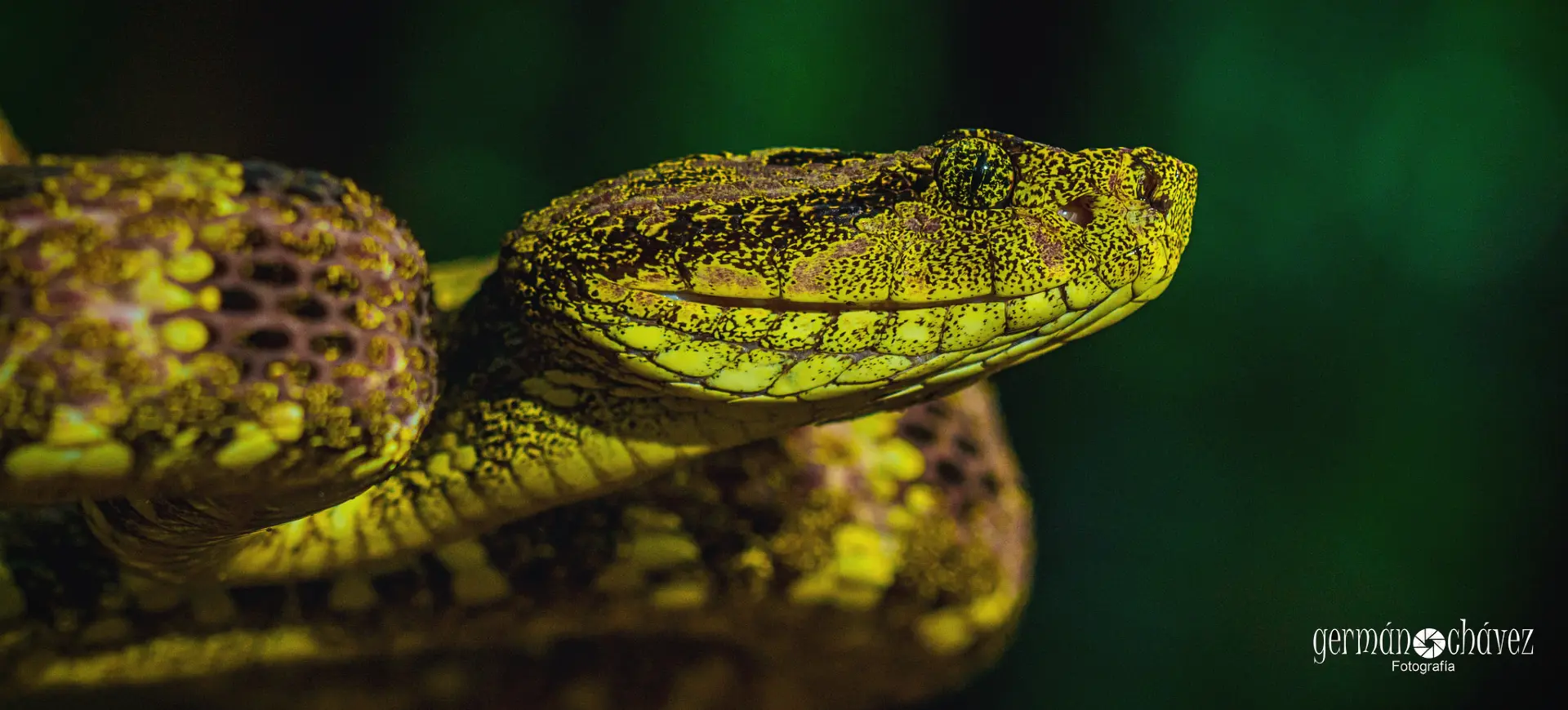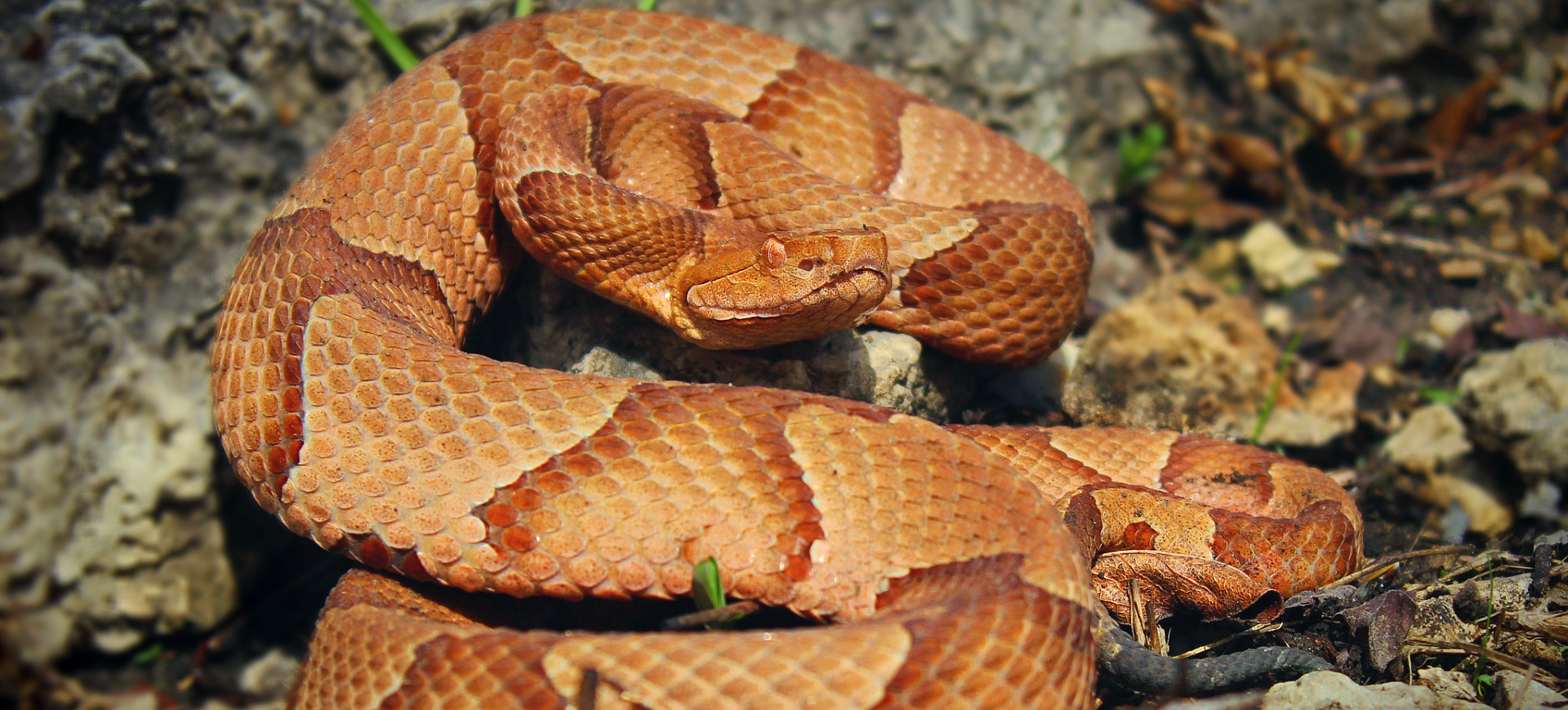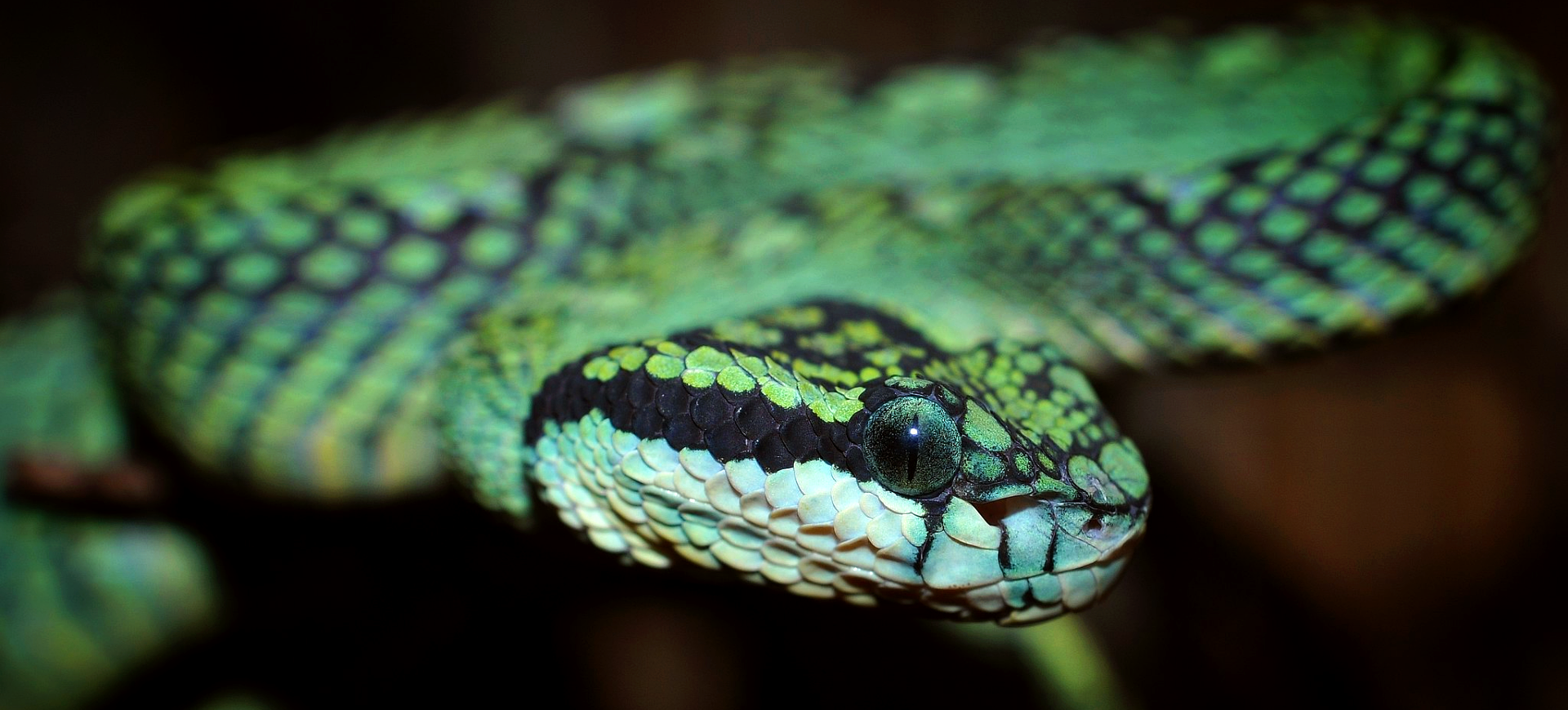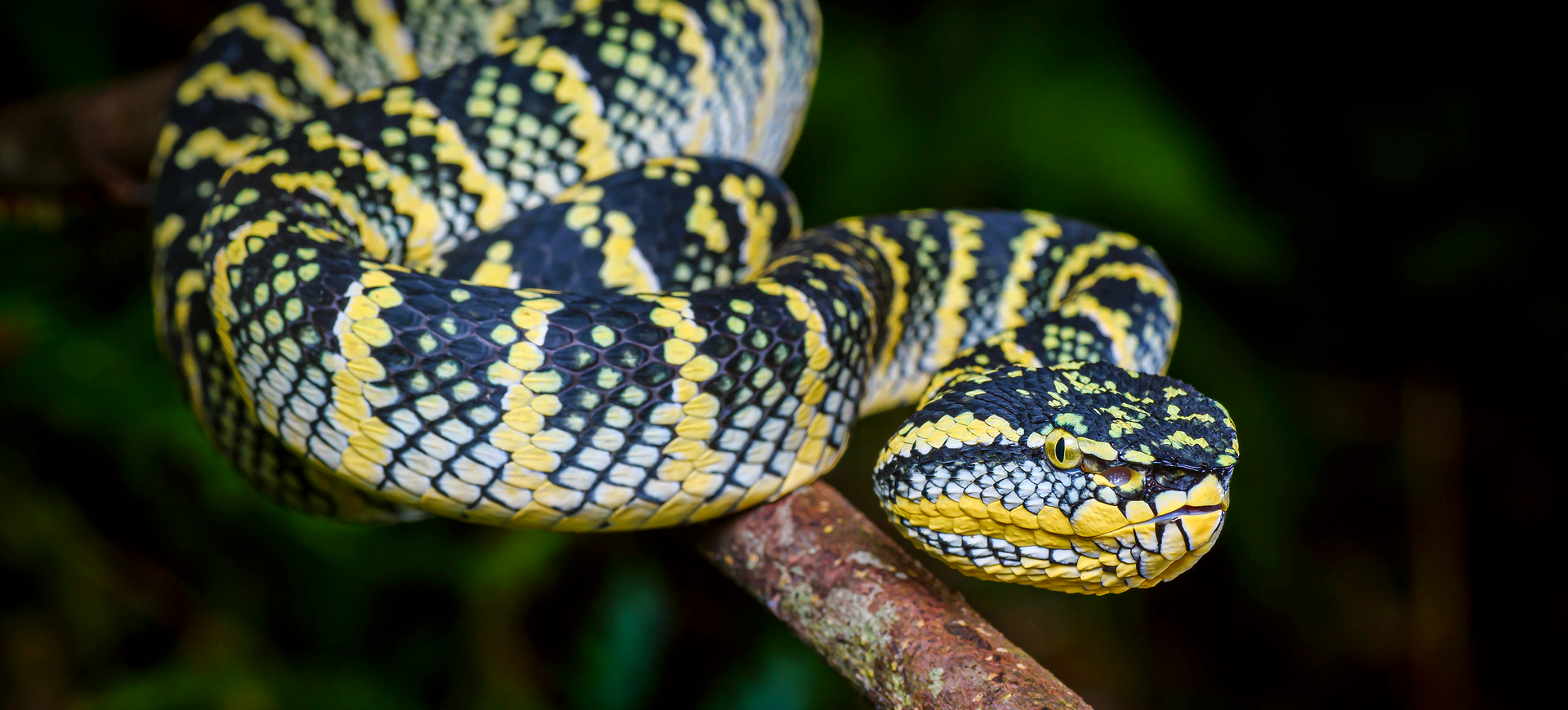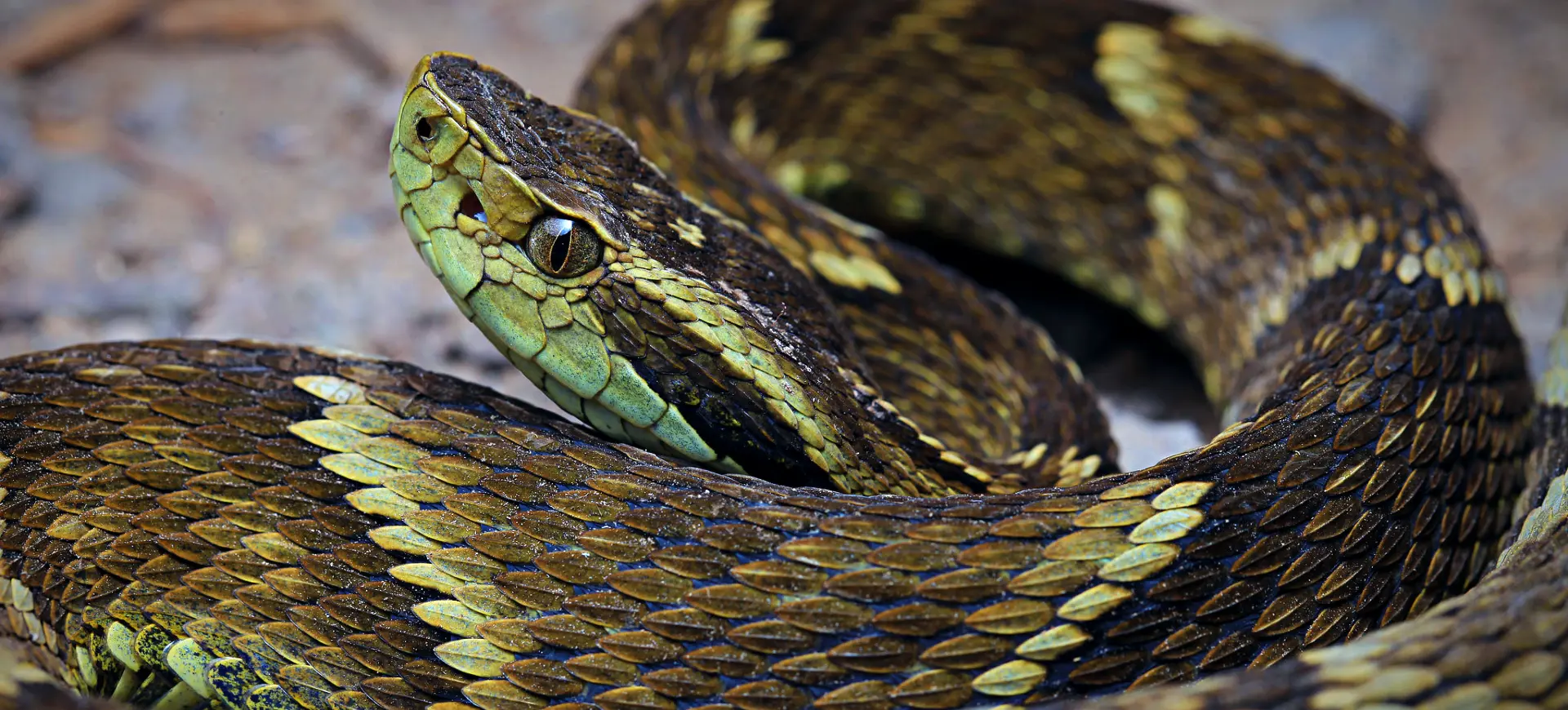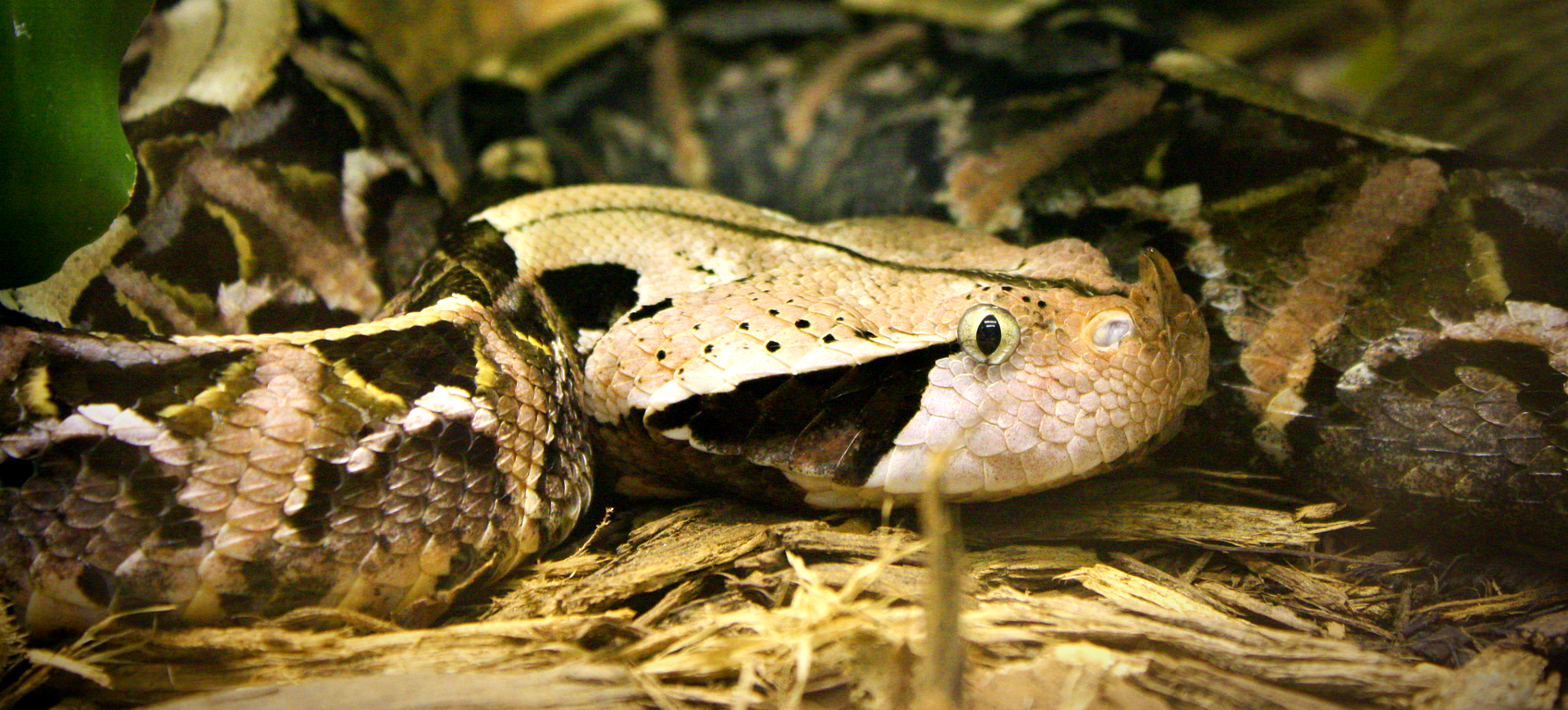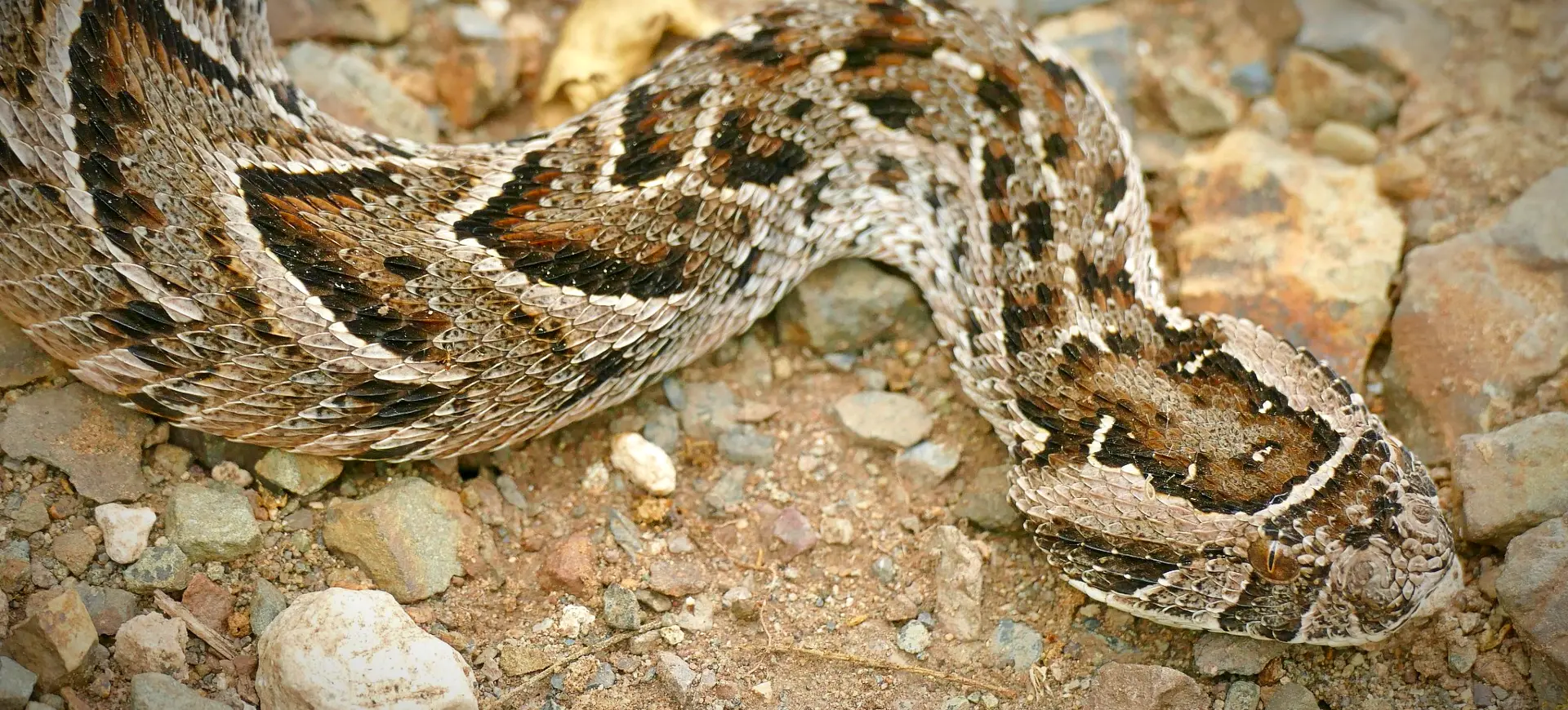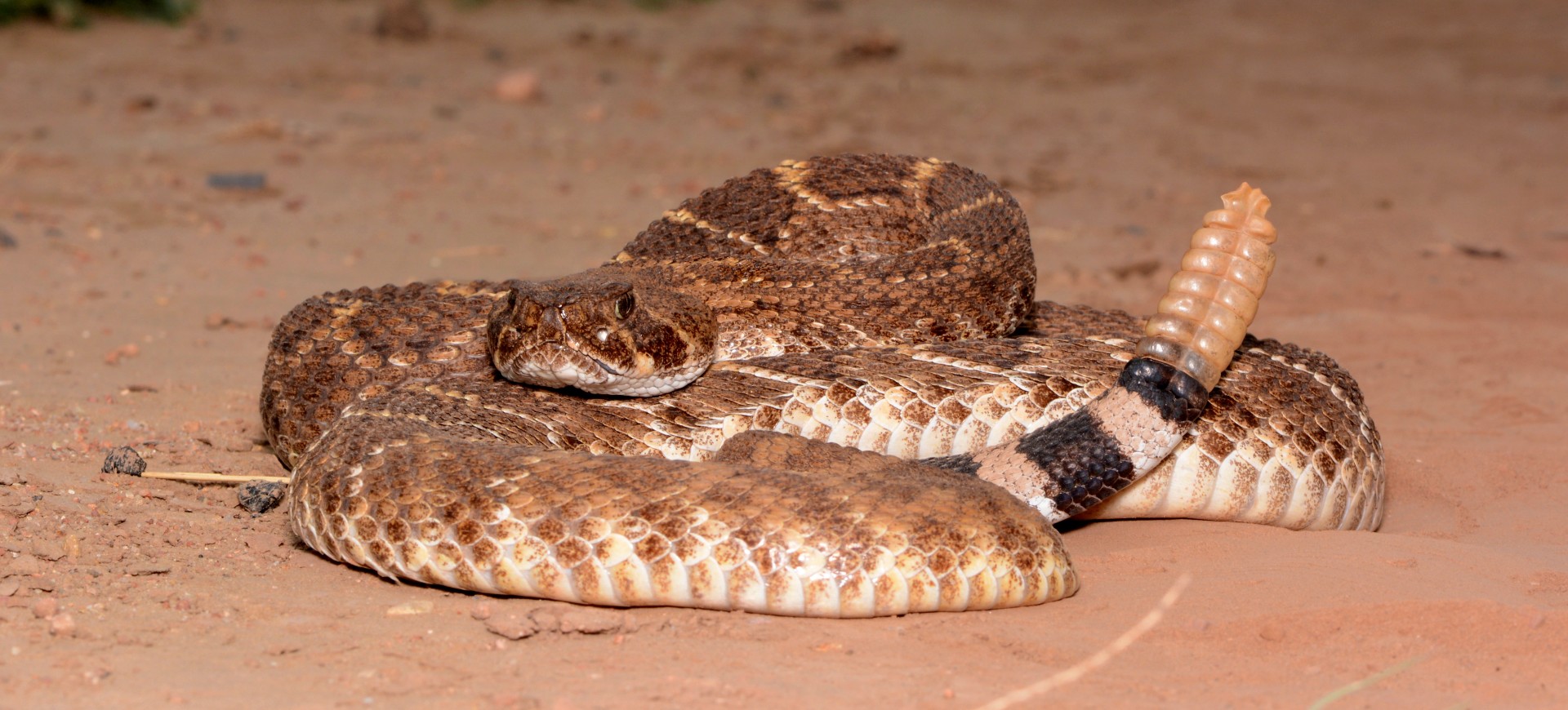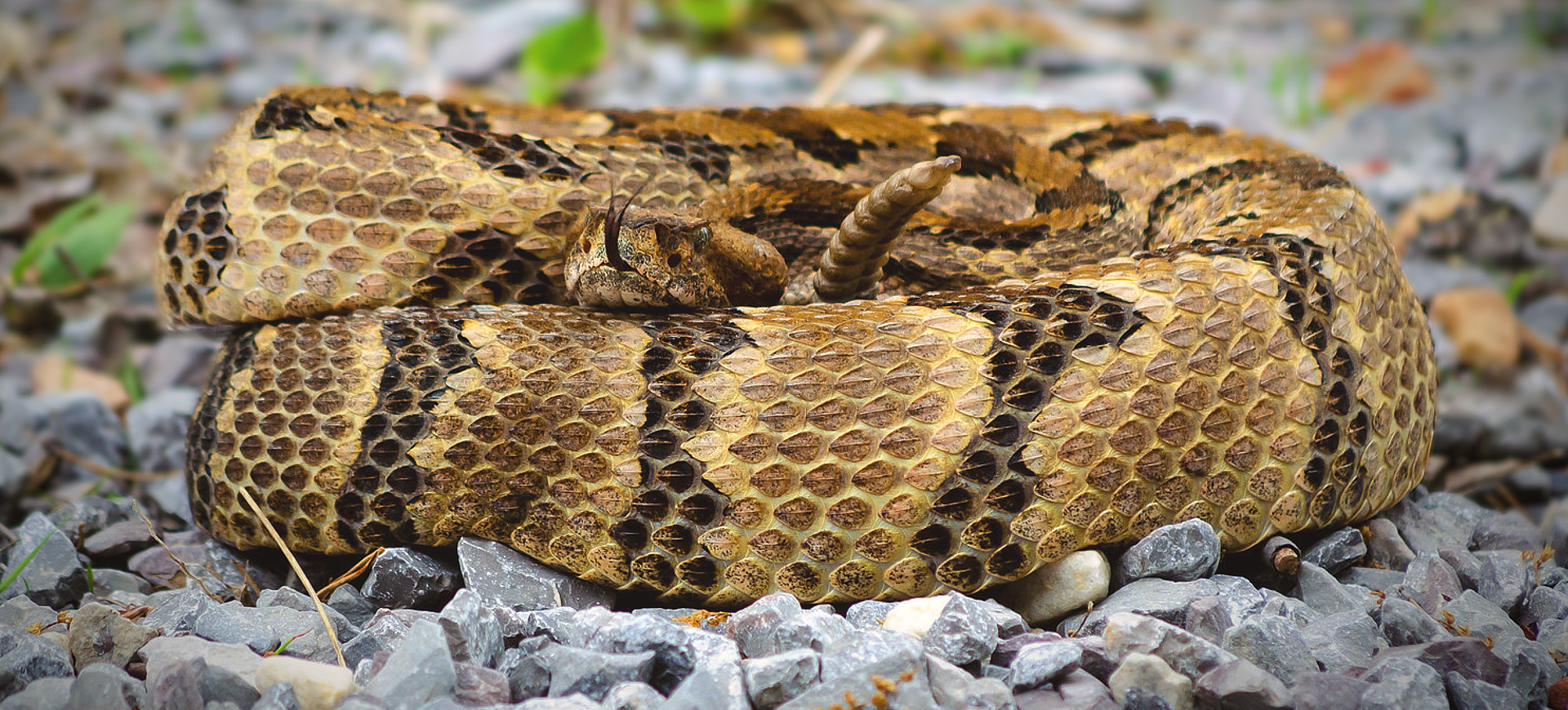Overview
The Prairie Rattlesnake, a venomous species native to the grasslands of North America, is known for its distinctive rattle, a feature shared by all rattlesnakes, which serves as a warning of potential threats. This species exhibits a color pattern that blends seamlessly with its prairie habitat, typically displaying shades of greenish-brown or yellowish-brown with darker, rounded blotches along its back. Adult Prairie Rattlesnakes commonly reach lengths of 3 to 4 feet, making them a formidable presence in their natural environment. They are solitary predators, relying on their potent venom to subdue various prey, including small mammals, birds, and occasionally amphibians.
Prairie Rattlesnakes are ectothermic, relying on external heat sources to regulate their body temperature. They are most active during the warmer months, often seen basking in the sun to increase their body temperature. During the winter, they hibernate in communal dens, which can sometimes house hundreds of snakes, demonstrating a rare social behavior among rattlesnakes. The species plays a crucial role in controlling rodent populations, contributing to the balance of their ecosystems.
Conservation efforts for the Prairie Rattlesnake focus on habitat preservation and minimizing human-snake conflicts. Although not currently listed as endangered, they face threats from habitat destruction, road mortality, and indiscriminate killing due to fear and misunderstanding. Education and awareness are key components of conservation strategies, aiming to foster coexistence and appreciation for the ecological role of this species.
Taxonomy
Kingdom
Phylum
Class
Order
Family
Genus
Species
Sub Species
Type
Physical Description:
The Prairie Rattlesnake features a robust, heavy-bodied form, characteristic of pit vipers, with a broad head distinct from its neck. The scales are keeled, giving their skin a rough texture and aiding camouflage among the grasses and rocks of their habitat. The tail ends in a segmented rattle, which the snake vibrates rapidly as a defense mechanism, producing a distinctive buzzing sound. The eyes have vertical pupils, and two heat-sensing pits between the eyes and nostrils enable the snake to detect warm-blooded prey, even in complete darkness.
Males are generally larger than females and possess longer tails. Juveniles resemble adults in pattern but are lighter in color and born with a single “button” on their tail, which adds a new segment with each shedding. The variation in coloration and pattern across individuals and regions allows Prairie Rattlesnakes to remain inconspicuous within their environments, an essential adaptation for hunting and avoiding predators.

Lifespan: Wild: ~15 Years || Captivity: ~25 Years

Weight: Male & Female: 1.5-2.5 lbs (0.68-1.13 kg)

Length: Male & Female: 36-48 inches (91-122 cm)
Characteristic:
Native Habitat:
The Prairie Rattlesnake inhabits many environments across the central and western United States, extending into Canada and northern Mexico. Their native habitat includes prairies, grasslands, scrublands, and the edges of deserts, where they find shelter in rock crevices, caves, and underbrush. These snakes are well-adapted to life in open areas but can also be found in wooded regions, demonstrating a remarkable adaptability to different ecosystems.
The selection of a suitable habitat is influenced by the availability of prey, basking sites, and winter dens, which are critical for the snake’s survival. The conservation of these habitats is vital for maintaining healthy populations of Prairie Rattlesnakes and the myriad of other species that share their environment.
Climate Zones:
Biomes:
WWF Biomes:
Biogeographical Realms:
Continents:
Countries:
Diet:
Diet & Feeding Habits:
Prairie Rattlesnakes are carnivorous, employing a sit-and-wait or active hunting strategy to capture prey. Their diet primarily consists of small mammals, such as mice, rats, and rabbits, but also includes birds, lizards, and occasionally insects. The snake’s venom, delivered through long, retractable fangs, immobilizes prey quickly, allowing easy consumption. This venom serves as a powerful hunting tool and begins the digestive process by breaking down the prey’s tissue.
These snakes play an essential role in controlling rodent populations, preventing overgrazing and the spread of disease. Feeding frequency varies with age, size, and environmental conditions, with adults capable of surviving long periods without food, especially during brumation in the colder months.
Mating Behavior:
Mating Description:
Prairie Rattlesnakes engage in a seasonal mating process, typically occurring in late summer or early fall, following their emergence from brumation. Males compete for access to females through combat, which involves intertwining their bodies and attempting to pin each other to the ground. The victor gains the right to mate with the female. Females give birth to live young, a characteristic of pit vipers, with litter sizes ranging from 4 to 21 offspring.
The young are born fully formed and self-sufficient, with venom and the ability to hunt from birth. Reproductive frequency among females is generally biennial, allowing them time to recover and accumulate sufficient resources for the next reproductive cycle. The survival of young snakes is influenced by numerous factors, including predation and habitat conditions, underscoring the importance of conserving suitable environments for their development and growth.
Reproduction Season:
Birth Type:
Pregnancy Duration:
Female Name:
Male Name:
Baby Name:
Social Structure Description:
Prairie Rattlesnakes are primarily solitary, with social interactions mostly limited to the breeding season. However, they demonstrate notable social behavior during brumation, when they gather in large numbers in communal dens. These aggregations may include other snake species and are thought to provide benefits such as increased survival rates during the cold months.
Outside of brumation, Prairie Rattlesnakes maintain territories and exhibit rattling to warn conspecifics and potential threats away. Understanding Prairie Rattlesnakes’ social structure and behavior is important for conservation management, particularly in identifying critical habitats and denning sites that require protection.
Groups:
Conservation Status:
Population Trend:
The overall population of Prairie Rattlesnakes is considered stable, though specific data on numbers are lacking. As with many widespread species, local populations may experience fluctuations due to various factors, including habitat loss, road mortality, and targeted killing. The species is not listed as endangered or threatened nationally, but conservationists monitor populations to ensure they remain healthy.
The primary focus of conservation efforts is habitat preservation and connectivity, ensuring that Prairie Rattlesnakes have access to the resources needed for survival. Public education about the species and its role in ecosystems can help reduce negative interactions and promote coexistence.
Population Threats:
Prairie Rattlesnakes face several threats, including habitat destruction and fragmentation from agricultural expansion, urban development, and energy production. Road mortality is a significant concern, as vehicles often kill snakes while crossing roads. Persecution by humans, driven by fear and misunderstanding, also contributes to mortality rates.
Climate change may impact their habitat and prey availability, adding a layer of vulnerability. Conservation measures aim to address these threats through habitat protection, research, and public outreach, emphasizing the ecological value of rattlesnakes and the need for their conservation.
Conservation Efforts:
Conservation initiatives for the Prairie Rattlesnake include habitat protection and management, research on population dynamics and ecology, and public education campaigns. Protected areas and wildlife corridors are essential for maintaining habitat connectivity, allowing for the movement of snakes between seasonal habitats and reducing road mortality. Efforts to raise public awareness about the benefits of rattlesnakes in controlling rodent populations and their role in the ecosystem can help foster a more positive perception of these snakes, reducing indiscriminate killing.
Collaboration between conservation organizations, government agencies, and local communities is crucial for developing effective strategies to protect Prairie Rattlesnakes and their habitats. Ongoing research and monitoring are necessary to assess the effectiveness of conservation measures and to adapt strategies as needed to ensure the species’ long-term survival.
Additional Resources:
Fun Facts
- The rattle of a Prairie Rattlesnake is made of keratin, the same material that makes up human hair and nails. Each time the snake sheds its skin, a new segment is added to the rattle.
- Prairie Rattlesnakes possess specialized heat-sensing pits between their eyes and nostrils, allowing them to detect the body heat of their prey, even in total darkness.
- They can control the amount of venom injected with each bite, enabling them to deliver “dry” bites as warnings or to conserve venom.
- These snakes can travel several miles from their dens to hunting grounds or to find mates, showcasing remarkable navigational abilities.
- The rattling sound can be heard up to 60 feet (18 meters) away, serving as an effective warning to potential predators or threats.
- While primarily solitary, Prairie Rattlesnakes gather in large numbers to brumate (a form of hibernation) in communal dens, sometimes including other snake species.
- By controlling rodent populations, Prairie Rattlesnakes help prevent the spreading of diseases such as hantavirus and Lyme, highlighting their role as key predators in their ecosystem.
- The dens used for brumation are often inherited, with some known to be used by generations of snakes for hundreds of years.
- Despite their evil capability, Prairie Rattlesnakes prefer to avoid confrontation with humans and will only bite as a last resort when threatened or cornered.
- They can go without food for several months during brumation in winter, slowing their metabolism to conserve energy until warmer weather returns.









